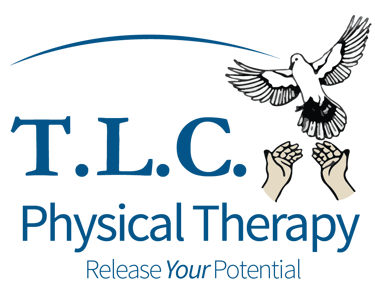Caring for your Joints: A Guide to Joint Health
This blog post explores essential joint care strategies for seniors, emphasizing the importance of maintaining joint health for an active and fulfilling lifestyle. It offers practical tips on diet, exercise, and physical therapy, tailored to the needs of seniors in Staten Island, Brooklyn, and Manhattan.
Jason Lamendola PT
4/10/20243 min read


Introduction: Understanding Joints and Their Importance in Daily Life
Joints, the remarkable connectors between our bones, play a pivotal role in every movement we make. From simple tasks like walking and bending to more complex activities, they are integral to our daily life. However, as we age, these essential components of our mobility do not always get the attention they deserve. In this article, we delve into the anatomy of joints and their fundamental role, especially for seniors, in maintaining an active and fulfilling lifestyle. Jason Lamendola PT and the team at TLC Physical Therapy go through a few key points about joint health and physical health.
The Impact of Aging on Joint Health
Aging is a natural process that brings many changes, particularly to our joints. Over time, they undergo wear and tear, often leading to discomfort and limited mobility. Common issues like arthritis, stiffness, and reduced flexibility become more prevalent in senior years. Understanding these changes is crucial for seniors in Staten Island, Brooklyn, and Manhattan, as it forms the basis for effective joint care and pain management strategies.
Practical Joint Care Techniques for Seniors
Maintaining a Healthy Weight: Excess weight can significantly strain joints, especially in the knees, hips, and spine. For seniors, achieving and maintaining a healthy weight through a balanced diet and regular exercise is key to reducing this strain and preventing joint damage.
Home Ergonomics for Joint Care: Adapting your living space with ergonomic tools and furniture can greatly reduce the risk of joint strain. Simple adjustments like proper seating height and lumbar support can make a big difference in everyday comfort.
Importance of Hydration for Joint Lubrication: Hydration is crucial for maintaining the synovial fluid, which acts as a lubricant in our joints. Regular water intake ensures that joints remain lubricated, aiding in smooth and pain-free movements, a simple yet effective way for seniors to care for their joints.
Balanced Diet for Joint Health: A diet rich in nutrients is essential for joint health. Foods high in antioxidants, collagen, and omega-3 fatty acids support joint health by reducing inflammation and promoting repair. Incorporating fruits, vegetables, bone broth, and fish into meals can be particularly beneficial for seniors.
Joint-Friendly Supplements: Supplements like glucosamine and chondroitin may offer additional support for joint health. Consulting with healthcare providers about these supplements can help seniors find the right options for alleviating joint pain and improving joint function.
Staying Physically Active: Regular exercise is vital for keeping joints healthy. Low-impact activities like swimming and walking, along with strength training, help maintain joint strength and flexibility, which are crucial for seniors' overall well-being.
Managing Stress to Protect Joints: Excessive stress can worsen joint pain and inflammation. Incorporating stress-reduction techniques such as yoga, meditation, and deep breathing into daily routines can be effective in managing joint pain related to stress.
Protecting Joints During Activities: Wearing appropriate protective gear and practicing safe techniques during physical activities can prevent joint injuries. Simple measures like using knee braces during sports can make a significant difference.
Proper Lifting Techniques: Correct lifting methods are essential to protect your joints and back from strain and injury. Seniors should focus on safe lifting techniques, such as bending from the knees and keeping the load close to the body.
Warm-Up and Stretching: Engaging in light movements and stretches before any physical activity prepares the joints and muscles, reducing the risk of injuries. It's a critical step for seniors to include in their exercise routine.
Practicing Good Posture: Good posture, whether standing or sitting, plays a significant role in reducing joint strain. Maintaining correct alignment helps prevent long-term joint issues and is an important aspect of joint care for seniors.
The Role of Physical Therapy in Joint Health for Seniors
Physical therapy is a cornerstone in maintaining and enhancing joint health for seniors. It offers personalized care plans that include targeted exercises, pain management techniques, and education on joint care. Physical therapists in Staten Island, Brooklyn, and Manhattan specialize in addressing the unique needs of seniors, helping them achieve greater mobility and a better quality of life.
Conclusion: Embracing a Joint-Healthy Lifestyle for a Better Quality of Life
In conclusion, understanding and caring for your joints is crucial for a fulfilling and active senior life. By incorporating these joint care strategies, including regular physical therapy, seniors can enhance their quality of life, enjoying increased mobility and reduced pain. Remember, your joints are integral to every movement; taking care of them means taking care of your overall well-being.
Are you ready to enhance your recovery journey with a comprehensive approach that includes joint health? Reach out to TLC Physical Therapy today at one of our Staten Island, Brooklyn, or Manhattan offices. Our team of dedicated professionals is here to support you every step of the way, offering personalized care plans that address your specific needs. Visit our website to learn more about our services or contact us directly to schedule a consultation. Let us help you achieve optimal health and wellness as you navigate your path to recovery
